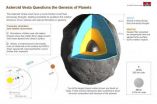(Press-News.org) Rochester, MN, July 16, 2014 – High body mass index (BMI) is associated with multiple cardiovascular diseases. However, emerging data suggest that there is an "obesity paradox," that being overweight may actually protect patients from cardiovascular mortality. Investigators have now confirmed that the risk of total mortality, cardiovascular mortality, and myocardial infarction is highest among underweight patients, while cardiovascular mortality is lowest among overweight patients, according to two reports published today in Mayo Clinic Proceedings.
Currently more than two-thirds of adult Americans are classified as overweight or obese. Because of the high prevalence of coronary heart disease (CAD), overweight and obese patients more frequently undergo revascularization procedures such as percutaneous coronary intervention (PCI) and coronary artery bypass graft (CABG). Obesity has been considered a risk factor for worst clinical outcomes following cardiovascular procedures like these, however, emerging data suggest that higher BMI protects against adverse outcomes in many acute and chronic disease states. This prompted experts to reexamine assumptions about body fat and explore the counterintuitive phenomenon known as the "obesity paradox."
In a landmark meta-analysis of 36 studies, Abhishek Sharma, MD, Cardiology Fellow at the State University of New York Downstate Medical Center in Brooklyn, New York, and colleagues determined that low BMI (less than 20 kg/m2) in tens of thousands of patients with coronary artery disease who underwent coronary revascularization procedures was associated with a 1.8- to 2.7-fold higher risk of myocardial infarction and all-cause and cardiovascular mortality over a mean follow up period of 1.7 years. Conversely overweight and obese patients had more favorable outcomes. Cardiovascular mortality risk was lowest among overweight patients with a high BMI (25-30 kg/m2) compared to people with a normal BMI (20-25 kg/m2). Indeed, in obese and severely obese patients with a BMI in the 30-35 and over 35 kg/m2 range, all-cause mortality was 27% and 22% lower than people with normal BMI.
Dr. Sharma observes, "At this stage we can only speculate on the reasons for this paradox. One explanation may be that overweight patients are more likely to be prescribed cardioprotective medications such as beta blockers and statins and in higher doses than the normal weight population. Further, obese and overweight patients have been found to have large coronary vessel damage, which might contribute to more favorable outcomes. This population may have a higher metabolic reserve, which might act protectively in chronic conditions like CAD. Also, there could be a difference in the pathophysiology of cardiovascular disease in over- and underweight patients. A non-modifiable genetic predisposition may also play a role in underweight patients."
He concludes, "However, this is still speculation. Further prospective studies are needed to investigate this association and explore potential underlying mechanisms."
In a second study published in the same issue, investigators examined the "obesity paradox" from another perspective by evaluating the effects of body composition as a function of lean mass index (LMI) and body fat (BF) on the correlation between increasing BMI and decreasing mortality. They estimated BF and LMI in nearly 48,000 people with a preserved left ventricular ejection fraction of more than 50% and examined the survival advantages of obesity across strata of these body compositions.
This large observational study showed that higher lean body mass was associated with 29% lower mortality, and while higher fat mass also exhibited survival benefits, this advantage disappeared after adjustment for lean body mass, suggesting that non-fat tissue bears the primary role in conferring greater survival.
"Body composition plays a critical role in the obesity paradox," says senior investigator Carl Lavie, MD, FACC, FACP, FCCP, Medical Director of Cardiac Rehabilitation and Preventative Cardiology at the John Ochsner Heart & Vascular Institute, Ochsner Clinical School, the University of Queensland School of Medicine, New Orleans. "Whenever examining a potential protective effect of body fat, lean mass index – which likely represents larger skeletal muscle mass – should be considered. At higher BMI, body fat is associated with an increase in mortality."
Noted expert Kamyar Kalantar-Zadeh, MD, MPH, PhD, of the Department of Medicine, University of California Irvine Medical Center, Orange, CA, observes that "although the underlying mechanisms of the obesity paradox and reverse epidemiology remain unclear, the consistency of the data is remarkable, leaving little doubt that these observational data are beyond statistical constellations and bear biologic plausibility.
"The findings in these studies should not be considered as an attempt to undermine the legitimacy of the anti-obesity campaign in the best interest of public health. Nonetheless, given the preponderance and consistency of epidemiologic data, there should be little doubt that in certain populations higher BMI, which is associated with higher risk of metabolic syndrome and poor cardiovascular outcomes in the long-term, confers short-term survival and cardiovascular advantages. Metaphorically we can liken cardiovascular risk factors to a friend who is a negative influence, causing you to misbehave and be sentenced to jail, but once imprisoned the friend remains loyal and protects you against poor prison conditions and other inmates."
INFORMATION: END
The 'obesity paradox': Cardiovascular mortality lowest among overweight patients
Is being overweight sometimes a good thing? Data suggest higher BMI protects against adverse cardiovascular outcomes, reports Mayo Clinic Proceedings
2014-07-16
ELSE PRESS RELEASES FROM THIS DATE:
Brain of world's first known predators discovered
2014-07-16
An international team of paleontologists has identified the exquisitely preserved brain in the fossil of one of the world's first known predators that lived in the Lower Cambrian, about 520 million years ago. The discovery revealed a brain that is surprisingly simple and less complex than those known from fossils of some of the animal's prey.
The find for the first time identifies the fossilized brain of what are considered the top predators of their time, a group of animals known as anomalocaridids, which translates to "abnormal shrimp." Long extinct, these fierce-looking ...
One injection stops diabetes in its tracks
2014-07-16
VIDEO:
Salk scientists explain the implications of their latest finding and how the treatment reverses symptoms of type 2 diabetes in mice without side effects.
Click here for more information.
LA JOLLA—In mice with diet-induced diabetes—the equivalent of type 2 diabetes in humans—a single injection of the protein FGF1 is enough to restore blood sugar levels to a healthy range for more than two days. The discovery by Salk scientists, published today in the journal Nature, could ...
Study: Climate-cooling arctic lakes soak up greenhouse gases
2014-07-16
New University of Alaska Fairbanks research indicates that arctic thermokarst lakes stabilize climate change by storing more greenhouse gases than they emit into the atmosphere.
Countering a widely-held view that thawing permafrost accelerates atmospheric warming, a study published this week in the scientific journal Nature suggests arctic thermokarst lakes are 'net climate coolers' when observed over longer, millennial, time scales.
"Until now, we've only thought of thermokarst lakes as positive contributors to climate warming," says lead researcher Katey Walter Anthony, ...
Scientists find way to trap, kill malaria parasite
2014-07-16
Scientists may be able to entomb the malaria parasite in a prison of its own making, researchers at Washington University School of Medicine in St. Louis report July 16 in Nature.
As it invades a red blood cell, the malaria parasite takes part of the host cell's membrane to build a protective compartment. To grow properly, steal nourishment and dump waste, the parasite then starts a series of major renovations that transform the red blood cell into a suitable home.
But the new research reveals the proteins that make these renovations must pass through a single pore ...
Asteroid Vesta to reshape theories of planet formation
2014-07-16
EPFL researchers have a better understanding of the asteroid Vesta and its internal structure, thanks to numerical simulations and data from the space mission Dawn. Their findings, published today in Nature, question contemporary models of rocky planet formation, including that of Earth.
With its 500 km diameter, the asteroid Vesta is one of the largest known planet embryos. It came into existence at the same time as the Solar System. Spurring scientific interest, NASA sent the Dawn spacecraft into Vesta's orbit for one year between July 2011 and July 2012.
Data gathered ...
NASA sees Typhoon Rammasun exit the Philippines
2014-07-16
Typhoon Rammasun passed through the central Philippines overnight and NASA satellite imagery showed that the storm's center moved into the South China Sea. NASA's TRMM satellite showed the soaking rains that Rammasun brought to the Philippines as it tracked from east to west.
Before Rammasun made landfall, the Tropical Rainfall Measuring Mission or TRMM satellite passed over the storm and measured cloud heights and rainfall rates. On July 14, 2014 at 18:19 UTC (2:19 p.m. EDT), TRMM spotted powerful, high thunderstorms reaching heights of almost 17km (10.5 miles). Rain ...
Researchers demonstrate health risks posed by 'third hand' tobacco smoke
2014-07-16
Research led by the University of York has highlighted the potential cancer risk in non-smokers – particularly young children – of tobacco smoke gases and particles deposited to surfaces and dust in the home.
Until now, the risks of this exposure known as 'third hand tobacco smoke' have been highly uncertain and not considered in public policy.
However, a new study published in the journal Environment International, has estimated for the first time the potential cancer risk by age group through non-dietary ingestion and dermal exposure to third hand smoke. The results ...
Squid skin protein could improve biomedical technologies, UCI study shows
2014-07-16
Irvine, Calif., July 16, 2014 – The common pencil squid (Loliginidae) may hold the key to a new generation of medical technologies that could communicate more directly with the human body. UC Irvine materials science researchers have discovered that reflectin, a protein in the tentacled creature's skin, can conduct positive electrical charges, or protons, making it a promising material for building biologically inspired devices.
Currently, products such as retinal implants, nerve stimulators and pacemakers rely on electrons – particles with negative charges – to transmit ...
National Psoriasis Foundation awards $1.05 million in research grants
2014-07-16
PORTLAND, Ore. (July 16, 2014)—Thirteen scientists received a total of $1.05 million in funding from the National Psoriasis Foundation for projects that aim to identify new treatments and a cure for psoriasis—an autoimmune disease that appears on the skin, affecting 7.5 million Americans—and psoriatic arthritis—an inflammatory arthritis that affects the joints and tendons, occurring in up to 30 percent of people with psoriasis.
Learn more about the NPF research grant program: http://www.psoriasis.org/research.
This year, three scientists each received a two-year, $200,000 ...
70-foot-long, 52-ton concrete bridge survives series of simulated earthquakes
2014-07-16
VIDEO:
A 70-foot-long, 52-ton concrete bridge survived a series of earthquakes in the first multiple-shake-table experiment in the University of Nevada, Reno's new Earthquake Engineering Lab, the newest addition to the...
Click here for more information.
RENO, Nev. – A 70-foot-long, 52-ton concrete bridge survived a series of earthquakes in the first multiple-shake-table experiment in the University of Nevada, Reno's new Earthquake Engineering Lab, the newest addition to the ...
LAST 30 PRESS RELEASES:
Injectable breast ‘implant’ offers alternative to traditional surgeries
Neuroscientists devise formulas to measure multilingualism
New prostate cancer trial seeks to reduce toxicity without sacrificing efficacy
Geometry shapes life
A CRISPR screen reveals many previously unrecognized genes required for brain development and a new neurodevelopmental disorder
Hot flush treatment has anti-breast cancer activity, study finds
Securing AI systems against growing cybersecurity threats
Longest observation of an active solar region
Why nail-biting, procrastination and other self-sabotaging behaviors are rooted in survival instincts
Regional variations in mechanical properties of porcine leptomeninges
Artificial empathy in therapy and healthcare: advancements in interpersonal interaction technologies
Why some brains switch gears more efficiently than others
UVA’s Jundong Li wins ICDM’S 2025 Tao Li Award for data mining, machine learning
UVA’s low-power, high-performance computer power player Mircea Stan earns National Academy of Inventors fellowship
Not playing by the rules: USU researcher explores filamentous algae dynamics in rivers
Do our body clocks influence our risk of dementia?
Anthropologists offer new evidence of bipedalism in long-debated fossil discovery
Safer receipt paper from wood
Dosage-sensitive genes suggest no whole-genome duplications in ancestral angiosperm
First ancient human herpesvirus genomes document their deep history with humans
Why Some Bacteria Survive Antibiotics and How to Stop Them - New study reveals that bacteria can survive antibiotic treatment through two fundamentally different “shutdown modes”
UCLA study links scar healing to dangerous placenta condition
CHANGE-seq-BE finds off-target changes in the genome from base editors
The Journal of Nuclear Medicine Ahead-of-Print Tip Sheet: January 2, 2026
Delayed or absent first dose of measles, mumps, and rubella vaccination
Trends in US preterm birth rates by household income and race and ethnicity
Study identifies potential biomarker linked to progression and brain inflammation in multiple sclerosis
Many mothers in Norway do not show up for postnatal check-ups
Researchers want to find out why quick clay is so unstable
Superradiant spins show teamwork at the quantum scale
[Press-News.org] The 'obesity paradox': Cardiovascular mortality lowest among overweight patientsIs being overweight sometimes a good thing? Data suggest higher BMI protects against adverse cardiovascular outcomes, reports Mayo Clinic Proceedings






